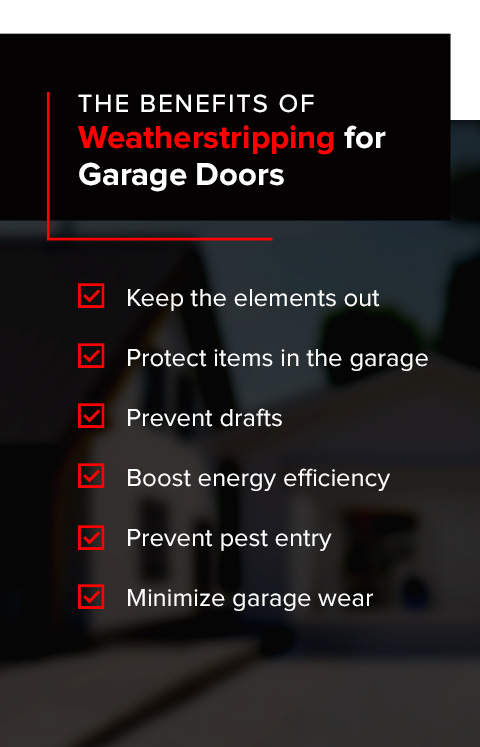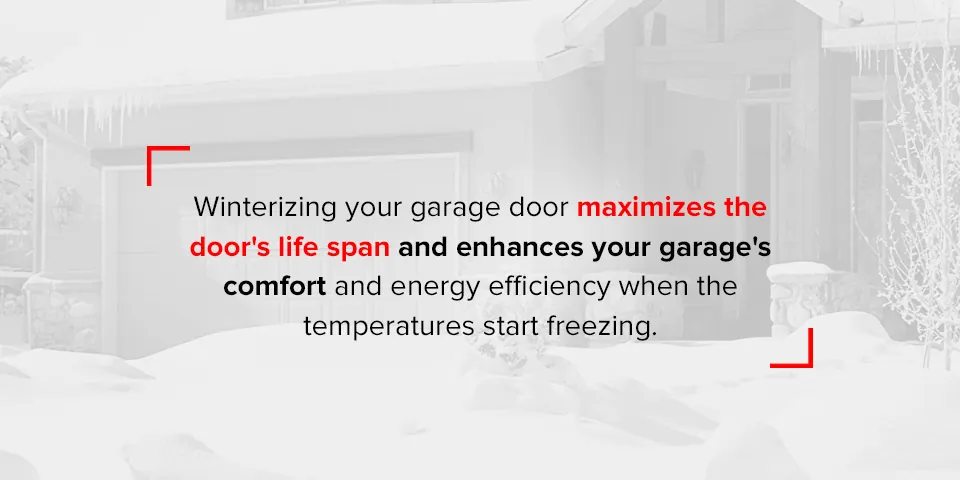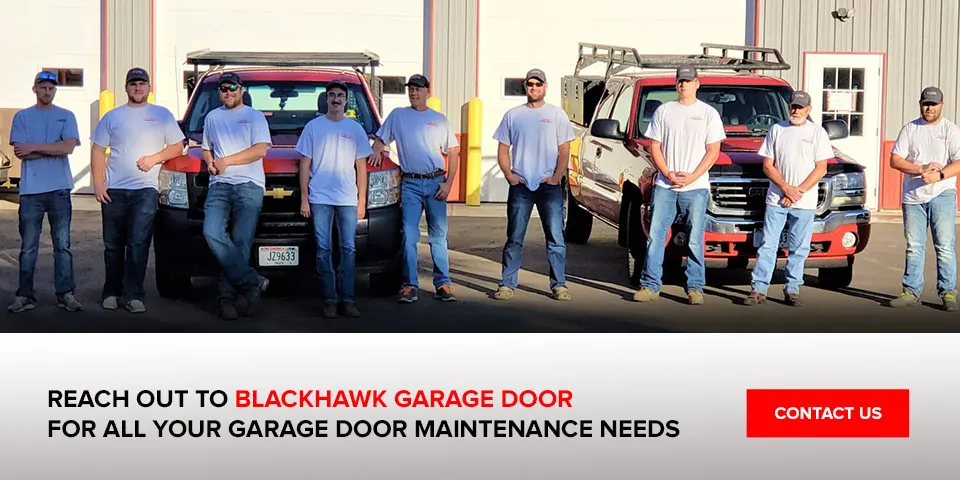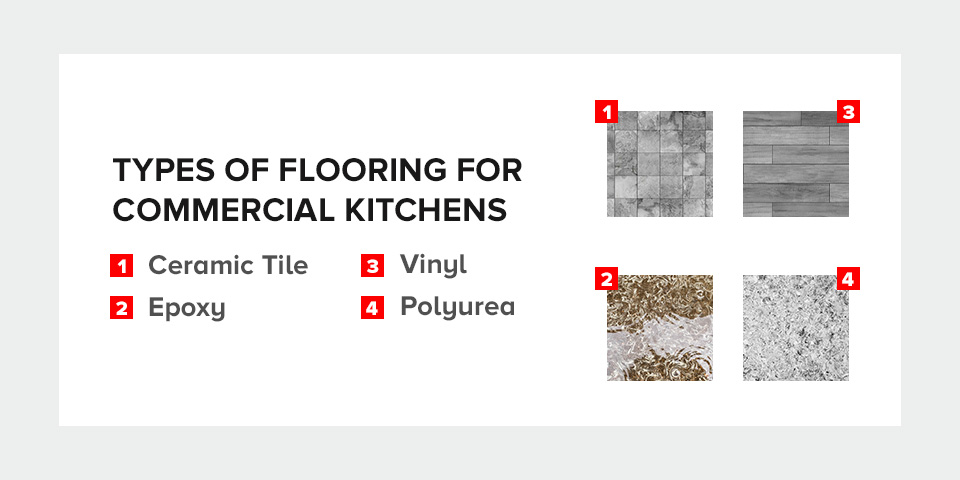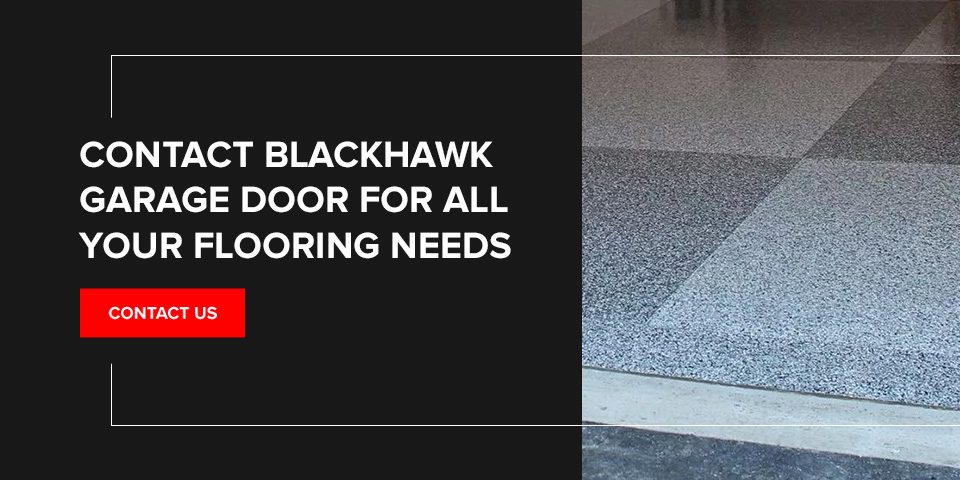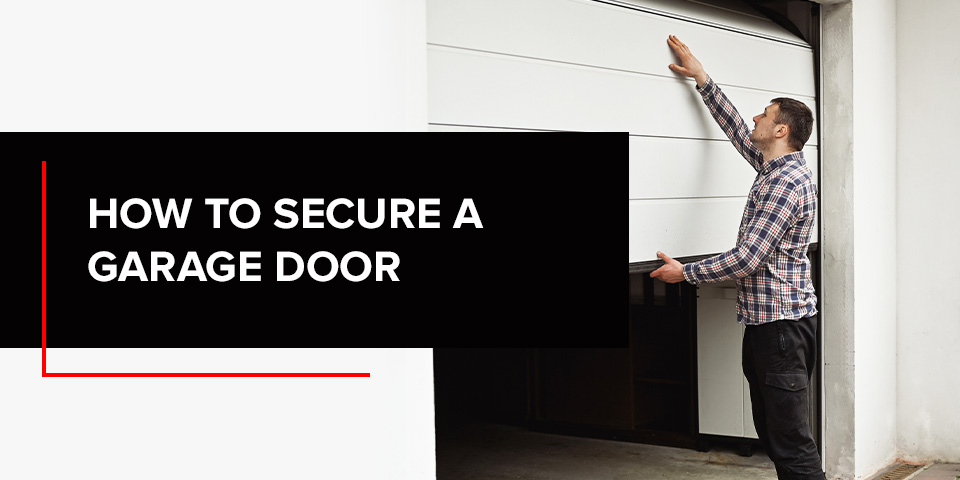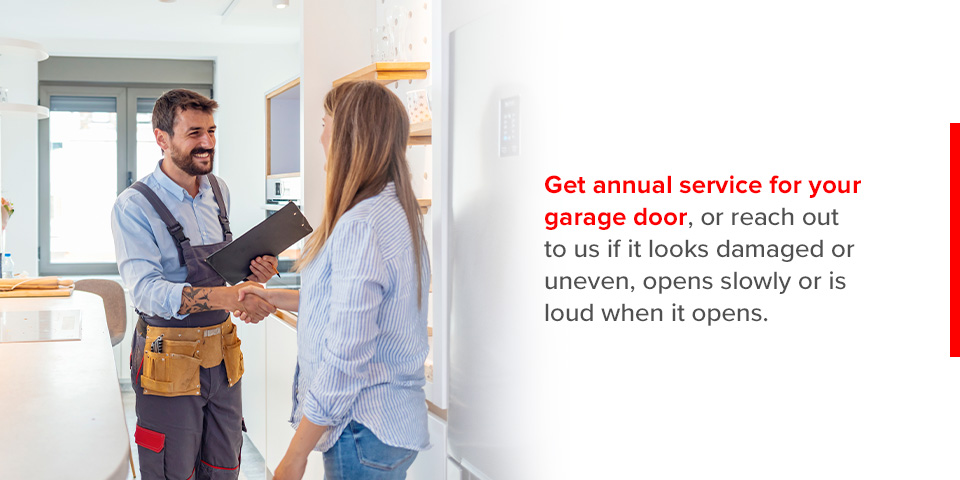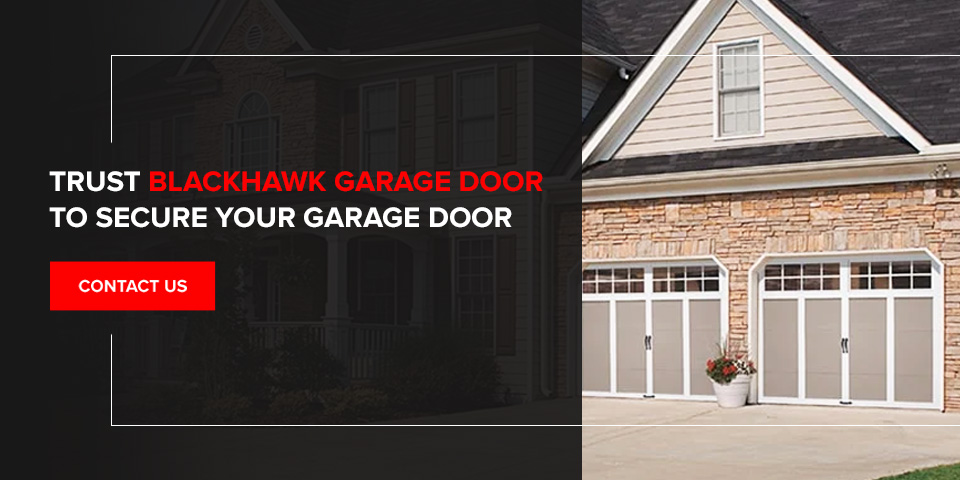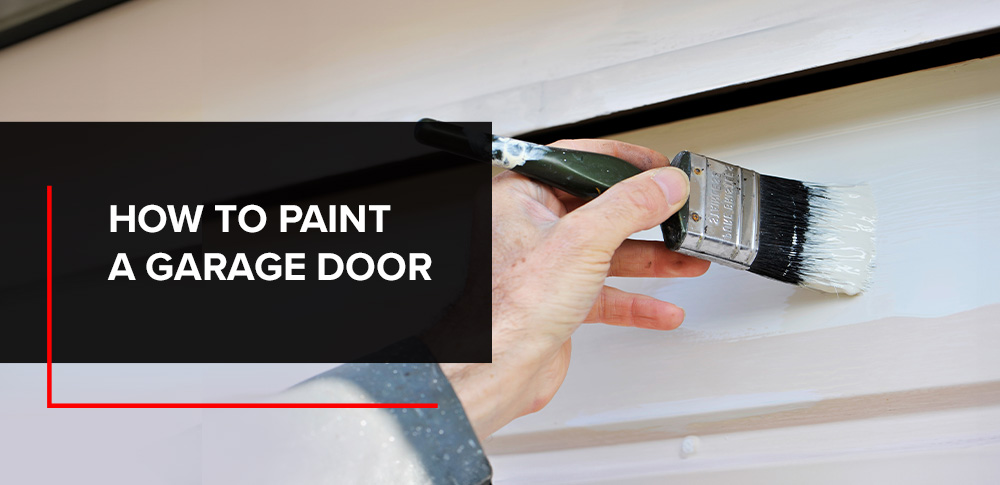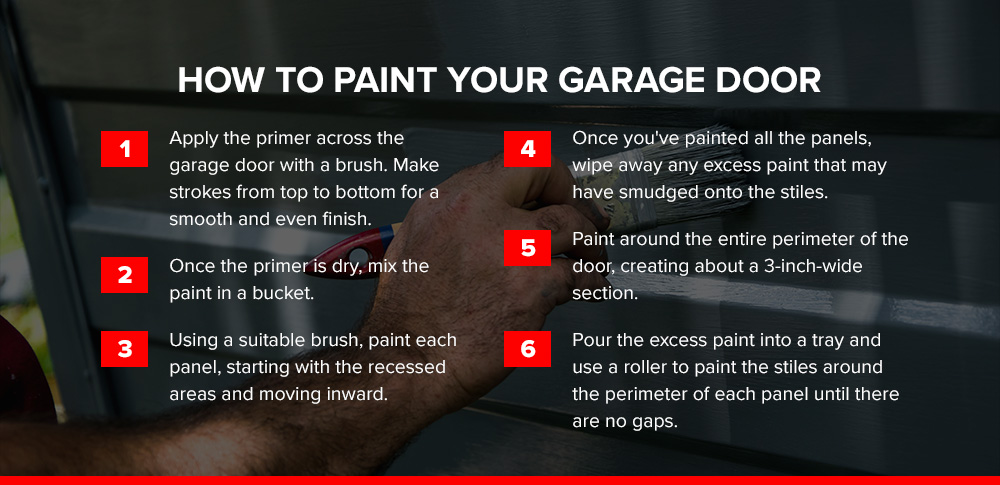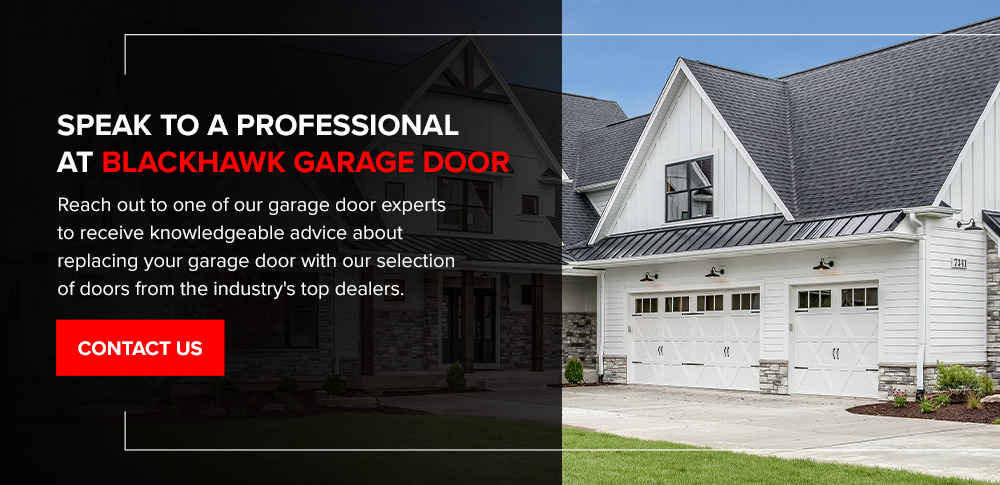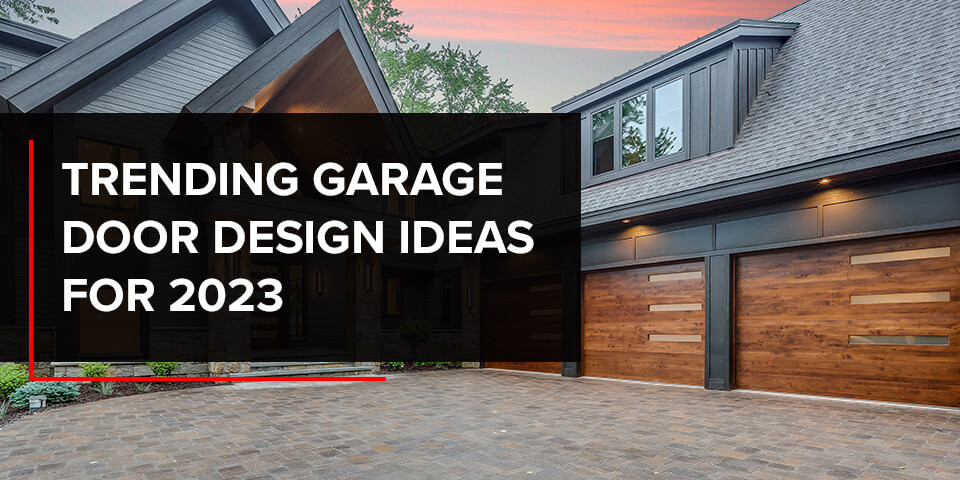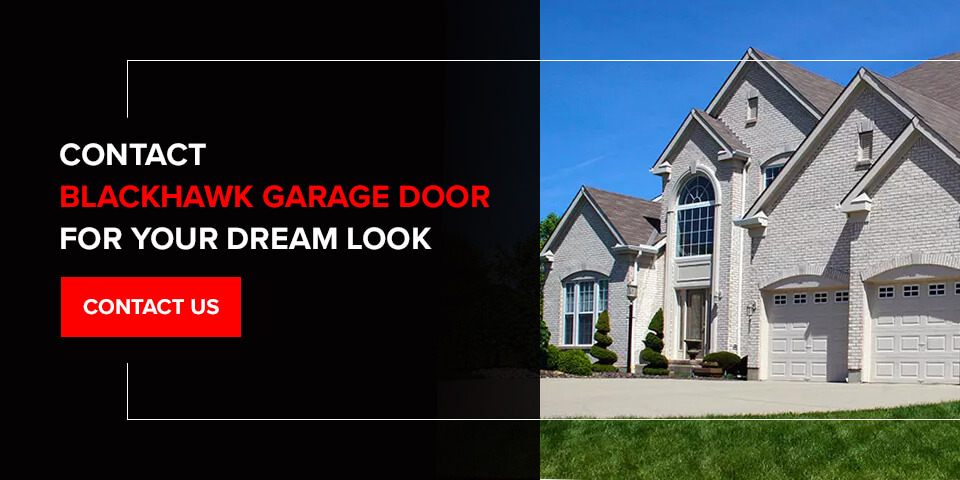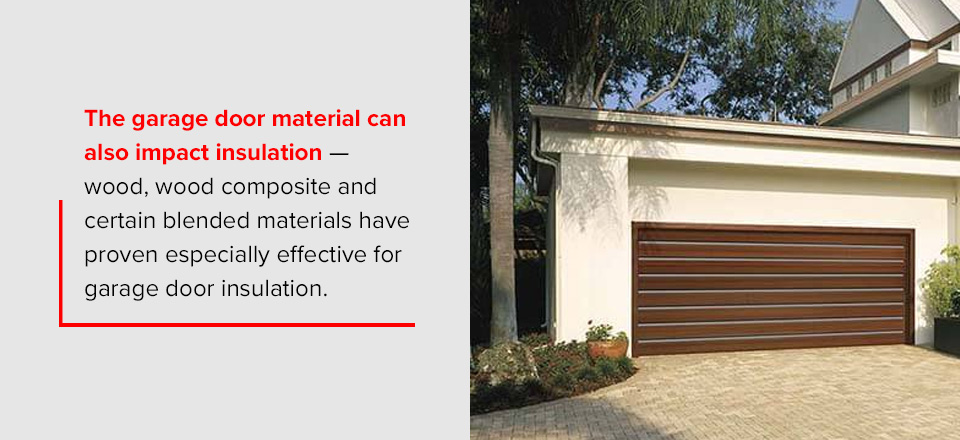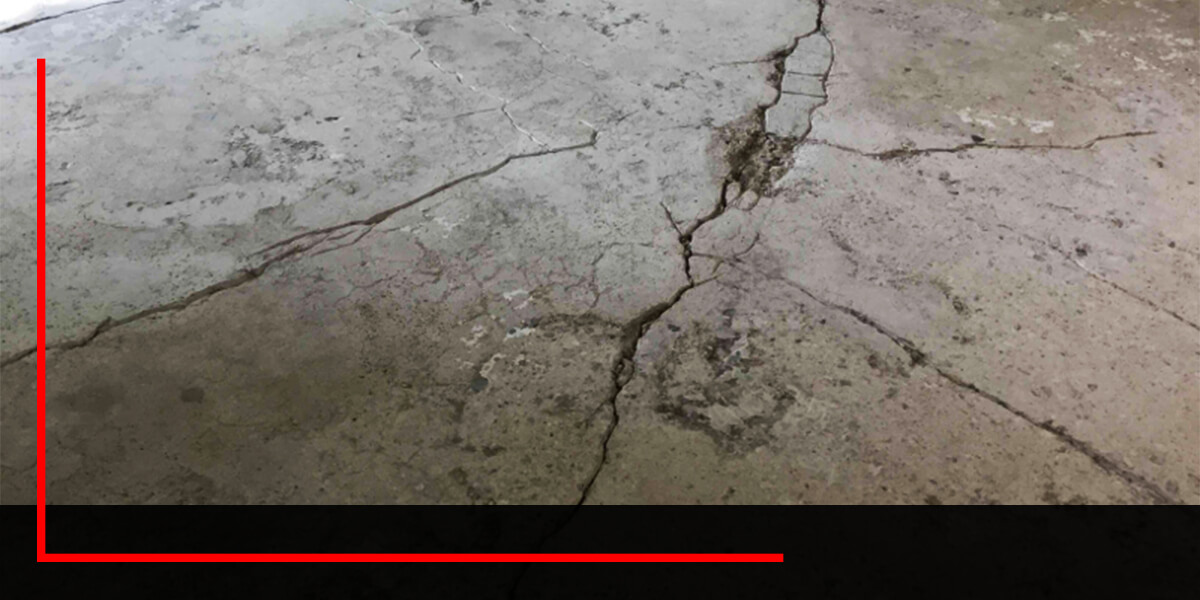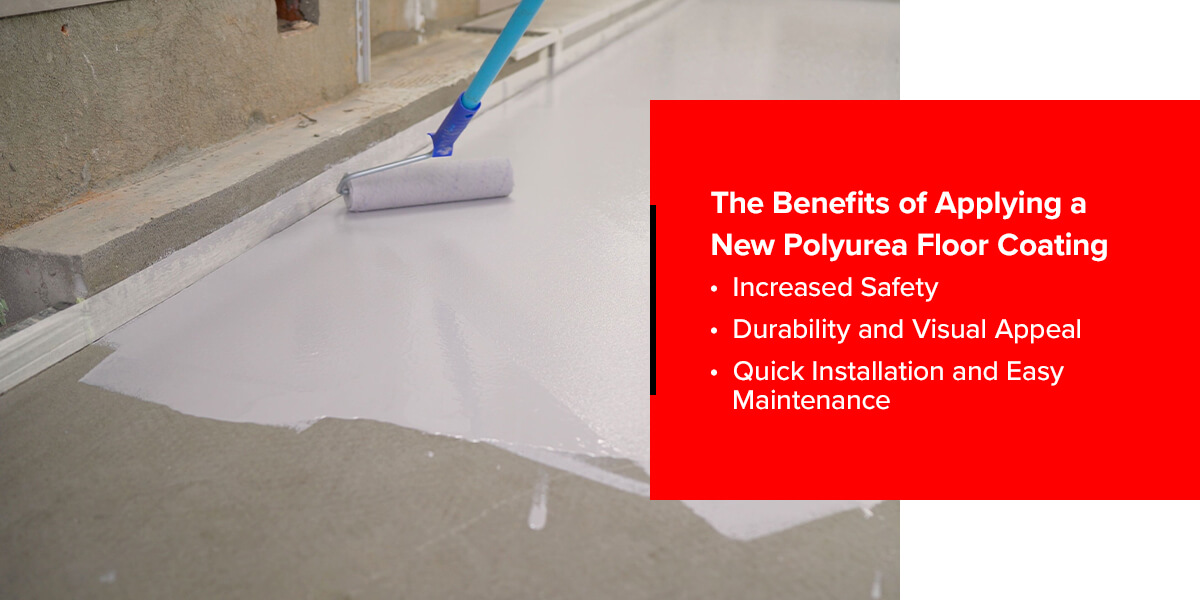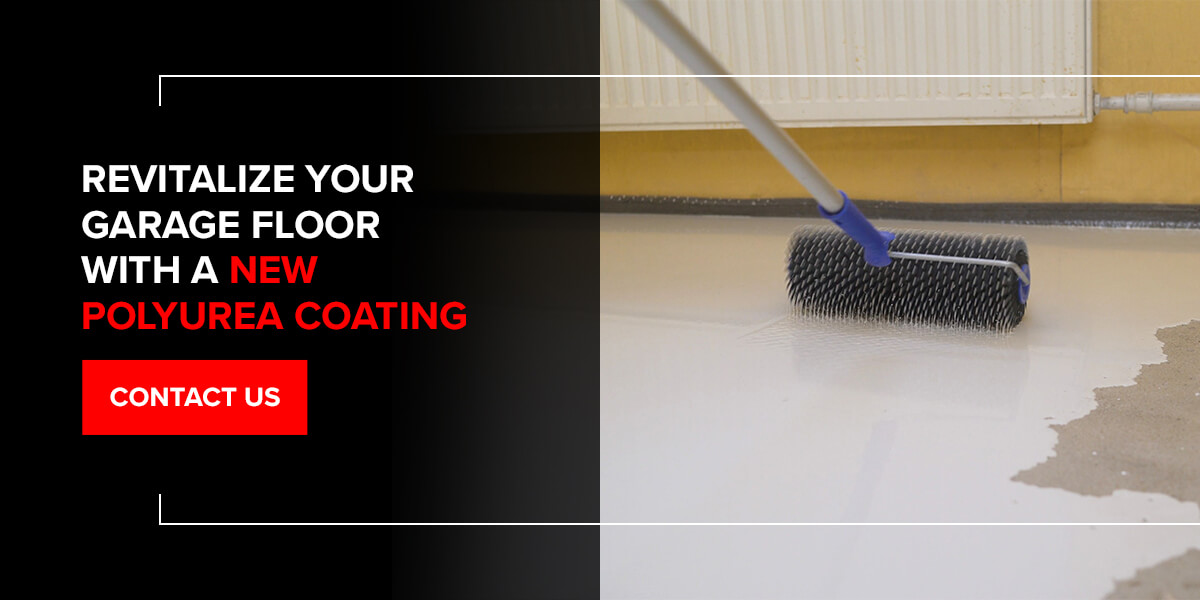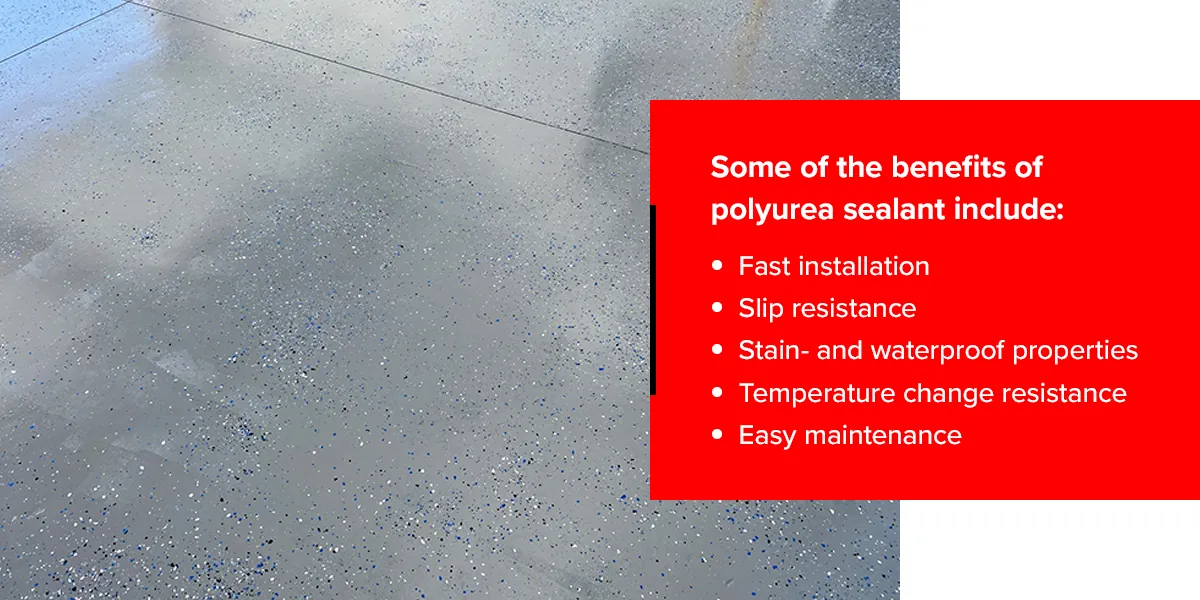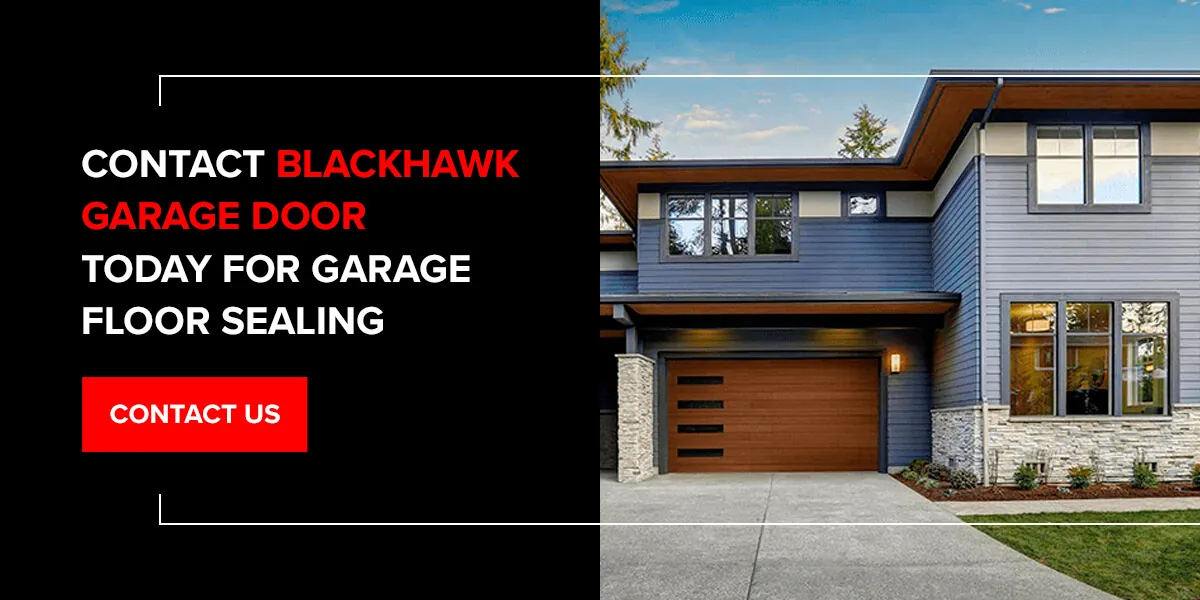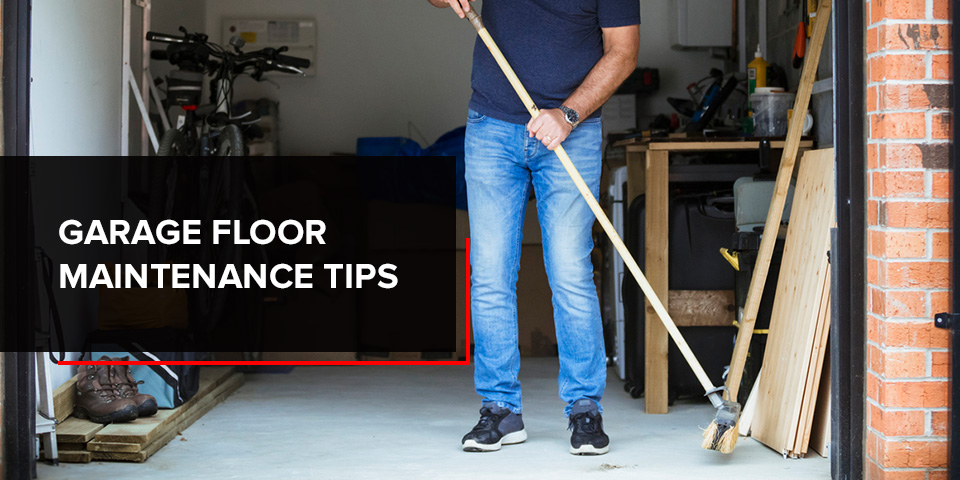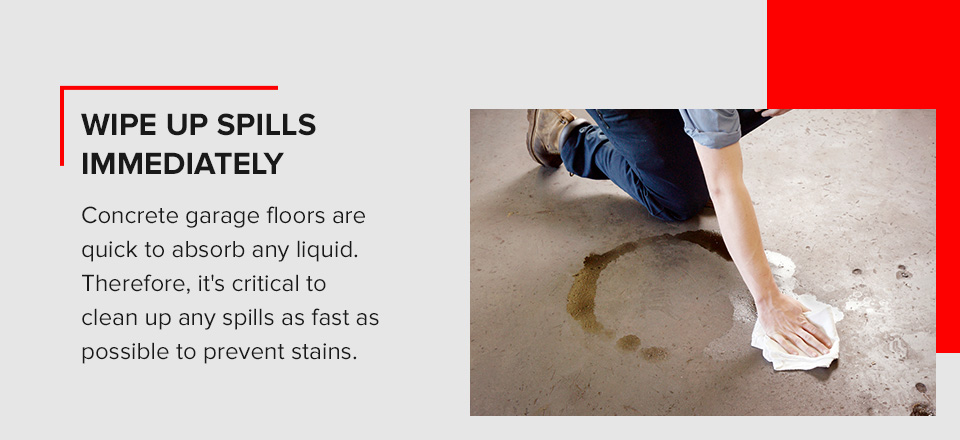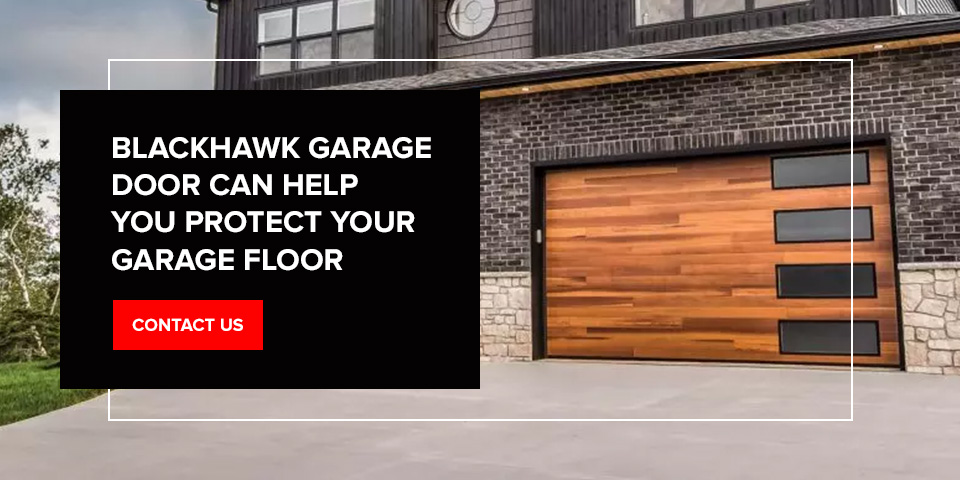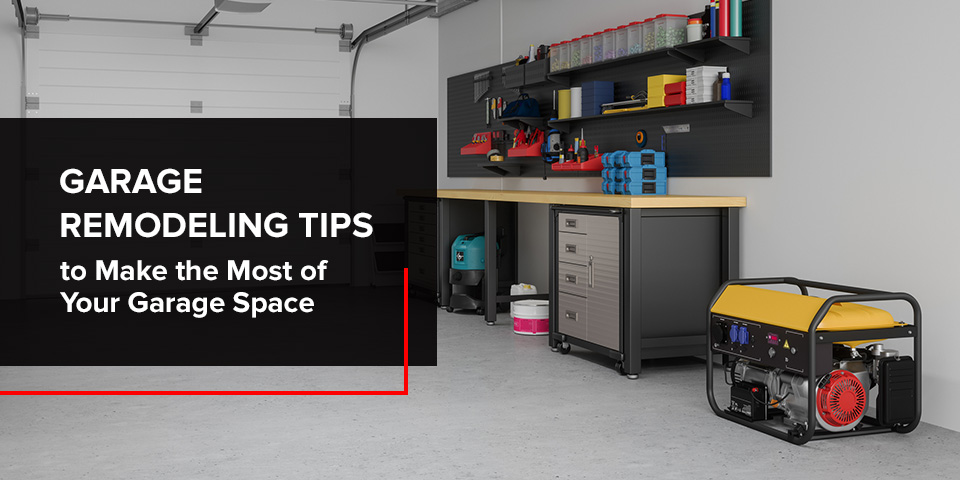How to Install Weatherstripping on a Garage Door
Garage door weatherstripping is essential in sealing the gaps around your doors and windows to create an optimal indoor environment in your garage and home. It can also improve the garage’s energy efficiency and usability.
You may need to install new weatherstripping on your garage door if it is insufficient, worn or damaged. Understanding the benefits, types and factors to consider when choosing whether stripping will help you make an informed decision with a positive return on investment.
What Is Weatherstripping?
Weatherstripping refers to the process of sealing the gaps around the top, bottom and sides of the garage door. It involves adding a seal that lines the garage door frame to prevent the entry of unwanted external elements, like water, debris, bugs, dirt and dust. Without weatherstripping, your home is more vulnerable to extreme temperatures, and you may notice increased utility bills.
Garage door weatherstripping is available in various materials with distinct properties, advantages and disadvantages. These include:
- Rubber: Rubber is a classic weatherstripping choice, available in different densities and thicknesses to suit different climates. It’s the best choice for areas with freezing winters because it remains flexible for extended periods.
- Vinyl: This affordable weatherstripping option this great for keeping drafts and moisture out. It’s resistant to mold and mildew growth and ideal for installation in rainy, humid or windy climates.
- Silicone: This material is superior in preventing the entry of air, water, dirt and dust. Silicone is highly durable and remains flexible, making it effective in extreme environmental conditions.
- Brush seals: These comprise tough metal or synthetic bristles that fill the gaps between your garage and the floor. They’re perfect for uneven garage doors and help regulate the temperatures inside the garage by keeping warm air in and cold air out.
- Foam (closed-cell): This material is a lightweight and flexible polyethylene or polyurethane ideal for sealing the gaps between garage doors and floors. It provides superior garage insulation but may not be as durable as other weatherstripping materials.
- Metal: Metal weatherstripping is a heavy-duty option that is incredibly durable and suitable for areas with freezing temperatures and heavy snowfall. Steel and aluminum are popular metal weatherstripping options, but ensure they’re coated against rust and corrosion for longevity.
Types of Weatherstripping for Garage Doors
Weatherstripping for garage doors can be categorized into three main types. Learn more about each type below.
Bottom Seals
Also known as door sweeps, these are long strips of rubber or vinyl attached to the bottom of your garage door to seal the gaps between the door and the floor. They’re readily available in a standard shape that fits the bottom of most modern doors.
Door sweeps are relatively easy to install using a steel, aluminum or PVC retainer. However, if you have a wooden garage door, you may need an aluminum or galvanized fastener to make your door compatible with them. They can be adjusted for uneven thresholds. To avoid the drag, opt for automatically retracting door sweeps that also increase durability.
Threshold Seals
Unlike door sweeps, threshold seals are attached to the floor instead of the garage door. They fill the gaps between the floor and garage door but often must be combined with a bottom seal to keep out all the elements. Nonetheless, threshold seals effectively keep water, dust and debris out of your garage while helping maintain the indoor temperatures.
Threshold seals are made from durable rubber, vinyl or aluminum, making them solid and sturdy enough to drive over without damage. They’re the best if your garage door meets the floor asymmetrically or the driveway slopes toward the garage.
Tension Seals
Also known as the V strip, it’s weatherstripping shaped like a V to create a tight seal along the garage door’s length. They’re available in aluminum, copper or stainless steel materials shaped to securely attach to the sides and top of the garage door.
Tension seals are relatively easy to add to your system. When properly installed, they are invisible and blend into many surfaces. However, they can only be installed on flat and smooth surfaces and may increase the garage door’s resistance.
The Benefits of Weatherstripping for Garage Doors
Weatherstripping has many aesthetic and functional advantages for your garage. It’s essential to choose the right weatherstripping and have it installed and maintained correctly so it can continue serving you for the long term.
The following are the main benefits of weatherstripping your garage door:
- Keep the elements out: Weatherstripping prevents snowmelt, rain, dust, hail, wind, dirt and debris from seeping into your garage. This protects your garage and home’s interior from water damage and the formation of mold and mildew and prevents the wear and tear of the doors and floors.
- Protect items in the garage: A weatherproof garage door keeps elements and pests out that could damage the belongings in your garage. It’s especially effective in protecting items that could be negatively impacted by moisture because gaps at the bottom of your door can let in dampness.
- Prevent drafts: Cold air or drafts can enter through the gap between your garage door and the floor, causing temperature imbalances. Weatherstripping prevents drafts inside the garage, maintaining a comfortable and pleasant space usable for various entertainment and workshop applications.
- Boost energy efficiency: Weatherstripping keeps uncomfortably warm weather out during the summer months and improves the effectiveness of insulation against cold temperatures in the winter. This minimizes your home’s heating and cooling energy losses, leading to significant energy cost savings.
- Prevent pest entry: Weatherstripping deters pests, preventing them from wreaking havoc in your home or destroying the belongings stored in your garage. Keeping pests out of your garage saves you the money you may otherwise need to spend on pest removal services and replacing your possessions.
- Minimize garage wear: When water enters your garage, it freezes, causing ice damage to the floors and accelerating the door’s wear and tear. Water pipes running through the garage are vulnerable to bursting when exposed to extremely cold temperatures and freeze damage.
How Do I Know If I Need Weatherproofing?
Weatherstripping typically lasts and remains usable for two to three years after installation. However, annual inspections are necessary to determine whether it’s still as effective as when it was first installed. Below are telltale signs you need to add new or replace your garage door’s weatherstripping:
- Visible damage: If you notice cracks, rips or visible wear and tear, the weatherstripping likely needs updating. Look for less obvious indications, like brittleness, flaking or warping. Rust and corrosion around your garage door can also be a sign.
- Drafts or air leaks: Do you feel drafts seeping into your garage from the bottom, top or sides of the door? You probably require new weatherstripping.
- Moisture infiltration: Check for puddles of water forming around or near the base of the garage door after precipitation. This is a sign your current weatherstripping is underperforming.
- Difficulty closing the door: Overly worn weatherstripping can cause improper alignment and resistance when closing your garage door, and you likely need to upgrade.
- Light gaps: If you notice a stream of light around the garage door, the weatherstripping may be damaged or worn.
While you can evaluate your weatherstripping yourself, partnering with garage door experts helps you identify other potential issues with your garage doors. While at it, they can conduct preventive garage door maintenance to ensure it’s ready for the harsh winters.
How to Install Garage Door Weatherstripping
Adding or replacing weatherstripping on your garage door can be a do-it-yourself project, especially if the door is working well. Nonetheless, working with professional garage door experts ensures your weatherstripping is installed effectively for longevity.
The following are general instructions for installing any weatherstripping to your garage door.
1. Take Your Door’s Measurements
Measuring your door before investing in weatherstripping ensures you get enough material to seal your garage door entirely and provide you with a positive return on your investment.
Measure the width, the length and the thickness between the floor and the door to determine how many weatherstripping pieces you need. Use a tape measure to get accurate and precise measurements for a snug fit of the weatherstripping.
2. Gather Installation Supplies
Collecting your weatherstripping installation materials and supplies beforehand ensures the process goes smoothly. Some of the must-have installation supplies include the following:
- Tape measure
- Cleaning supplies
- Drill or screwdriver
- Screws or nails
- Construction adhesive (for threshold seals)
- Utility knife or scissors
- Caulk and caulk gun
- Weatherstripping kit
- Gloves
3. Clean the Surface
Clean your garage floors and wipe the door frame to remove dirt and debris. This helps with the proper adhesion of the weatherstripping. You can go the extra mile to wipe down the floor and garage door with a degreaser if the surfaces are oily or greasy. Cleaning the surfaces also ensures longevity by minimizing the risk of bumping.
4. Install Weatherstripping
You need to cut your weatherstripping to the exact size of your garage door for a perfect fit. You don’t want weatherstripping too long or short, preventing proper functioning.
To correctly install your weatherstripping, follow the manufacturer’s instructions closely. Most DIY-friendly options come with adhesive backing, so you can simply peel and stick it to the top, bottom and sides of the door.
Start attaching the weatherstripping from the center and move outwards to avoid wrinkling and bubbling. If your weatherstripping requires screwing or nailing into place, be sure to use finishing nails every few inches to secure it. Aluminum and galvanized nails are the best because they don’t easily corrode or rust.
Installing threshold seals requires more precision, so you want to mark the floor with chalk or a permanent marker. Carefully apply the construction adhesion along the edges where the seal will sit, then place the threshold seal and press it into the adhesive. Give your the threshold strip at least a day before driving over it.
5. Test and Adjust As Needed
You want to ensure your weatherstripping works as intended without jamming or damaging it. Start by opening and closing the garage door to check that it’s oriented properly and doesn’t catch on the weatherstripping. With the door closed, inspect the seal for any gaps from the inside.
Other Ways to Weatherproof Your Garage Door for Winter
While weatherstripping is an effective method of garage door weatherproofing with many benefits, there are other ways you can prepare it for the winter.
Winterizing your garage door maximizes the door’s life span and enhances your garage’s comfort and energy efficiency when the temperatures start freezing. The following are practical tips for winterizing your garage door:
- Schedule regular maintenance: Before the start of the winter, inspect your garage door, its tracks, opener and safety sensors to ensure they’re working optimally. Perform necessary tuneups to prevent minor issues from worsening as the snow packs around different parts.
- Lubricate moving parts: Metal garage door parts like springs, hinges and rollers need regular maintenance and lubrication to keep them running smoothly. Avoid common household lubricants and stick to non-silicone options that don’t quickly freeze or collect dirt and debris.
- Add insulation: Most modern garage doors have built-in insulation to keep the garage warm and prevent moisture buildup. If you have an older model door, you should invest in insulation to minimize the risk of moisture buildup and freezing, which can prevent your garage door system from operating correctly.
Frequently Asked Questions
Here are some commonly asked questions and answers about weatherstripping and garage door winterization methods.
How Long Should Garage Door Weatherstripping Last?
Good quality weatherstripping typically lasts between two and three years. Its actual lifespan is determined by the type and material of the weatherstripping, the elements it’s exposed to, the traffic through the door and how often it is opened and closed. Regular inspection and maintenance of the weatherstripping may ensure it lasts longer.
Do I Need to Weatherproof My Garage Door?
Yes, you need to weatherproof your garage door to keep the rain, snow and cold temperatures outside during the winter. Weatherproofing makes your garage more comfortable and livable while protecting your home’s interior and belongings.
When Should You Replace Weatherstripping on the Bottom of a Garage Door?
If your weatherstripping turns hard and brittle, it is due for replacement. Other signs include cracks, rips and tears. You should also plan for replacement if you see a light at the bottom of your garage door or feel drafts.
Reach out to BlackHawk Garage Door for All Your Garage Door Maintenance Needs
While you can install weatherstripping yourself, contacting a professional is a worthwhile investment because they can handle other garage door repairs with expertise and precision. At BlackHawk Garage Door, we offer comprehensive garage door services, including installation, maintenance and repair in Baldwin, Wisconsin, Bloomington, Minnesota, and the surrounding areas.
Contact us today to schedule weatherstripping installation and your other maintenance needs.
Best Flooring for Commercial Kitchens
When shopping for flooring, you would likely consider its implications before you commit. The decision-making process is even more weighty if you’re running a commercial kitchen. This environment demands a robust floor type that can withstand the rigors of commercial space, from high traffic to spills.
What is the best floor for a commercial kitchen? Explore what you need to know to select the perfect commercial-grade flooring for your restaurant.
What Is Commercial-Grade Kitchen Flooring?
Commercial-grade flooring refers to the types of materials designed to withstand the demands of commercial areas, which typically involve high foot traffic, spills, stains and weight from heavy equipment. Compared to residential flooring solutions, commercial kitchen floors are tougher, more durable and suitable for the busy atmosphere of the food industry.
According to the Minnesota Department of Health’s administrative rules for retail food establishments, flooring materials should be smooth, nonabsorbent, durable, grease-resistant and easy to clean. While you can use different flooring materials based on the needs of your establishment, they must follow manufacturer specifications.
These guidelines underscore the importance of choosing proper flooring materials for food establishments like restaurants. Considering the need for a durable material that doesn’t absorb moisture and can resist grease, commercial-grade flooring is the most practical solution.
How to Choose Commercial-Grade Flooring
The best floor materials for commercial kitchens possess qualities that make them ideal for that environment. Look for these features when choosing kitchen floor materials for your restaurant:
- Antimicrobial: Floors that act as safe spaces for bacteria to thrive are hazardous in food preparation areas. Antimicrobial flooring materials have qualities that discourage the buildup of dirt and germs. These floors accommodate thorough cleaning to ensure no areas harbor microorganisms.
- Durability: Besides bustling with long hours of foot traffic, commercial kitchens are also exposed to damaging conditions like constant spillage, scratches, heavy bumps and thermal shock. Additionally, regular cleaning uses strong chemicals to protect against microorganisms. For these reasons, select durable flooring materials that can withstand daily wear and maintain longevity.
- Slip resistance: Safety should be a top priority when selecting floors for commercial kitchens. As a work area with high foot traffic, a commercial kitchen increases the risk of slipping due to moisture and greasing from oil spills. Anti-slip flooring lowers the risk of serious injuries.
- Strong moisture barrier: Commercial kitchens are exposed to increased levels of moisture and spillage. They also need to be mopped regularly. Consider a flooring material with a high resistance to water damage due to a strong moisture barrier. When shopping for materials, look for the nonabsorbent feature.
- Easy to maintain: Hygiene in a commercial kitchen is crucial, and it demands a floor that is easy to clean and maintain. These floors have features like stain and water resistance, allowing regular cleaning and scrubbing using basic products. Additionally, consider ongoing maintenance and repairs to ensure long-term cost-efficiency.
Types of Flooring for Commercial Kitchens
Various types of commercial kitchen flooring are available, appealing to buyers for different reasons, such as aesthetics and affordability. Here is an overview of the different options on the market.
Ceramic Tile
Tiles are timeless flooring materials that have been a reliable option for decades due to their durability and resilience. However, tiles are more suitable for residential flooring because they lack the qualities to withstand the demands of a commercial establishment. Since ceramic tiles are even weaker than porcelain ones, they may not fare well in a commercial kitchen. They are also slippery when wet, which can be a serious hazard in a kitchen.
Generally, tiles are easy to clean and are present in many kitchens. But they are porous unless you opt for glazed ceramic or porcelain, which will perform until the grout lines weaken. Weak grout lines let water seep under the tiles and accumulate dirt and bacteria. Tiles will also crack due to foot traffic and equipment weight in commercial kitchens. As such, periodic replacement and regrouting to manage moisture retention, odors and general wear and tear are common with tiles.
Epoxy
Epoxy resin is one of the most preferred coating materials in the flooring industry, contributing to the renewed popularity of concrete floors. While epoxy is strong and can take on heavy use, it’s a temporary solution. Cracks and chipping are common, which is not desirable in a commercial kitchen where the floor is exposed to spills, chemicals and heavy objects. Epoxy floors are also not slip-resistant, which can lead to hazardous working conditions in the case of spills.
Another consideration is that epoxy flooring systems in Minnesota need approval from the regulatory authority to ensure adherence to specific guidelines.
Vinyl
Vinyl is a popular and luxurious flooring option, but it’s not common in commercial kitchens because it requires high maintenance and special care to provide long-term value. Vinyl’s maintenance requirements include wiping spills immediately and preventing sand, dust and grit, as they can cause damage. Spills also lead to an increased likelihood of falls, since vinyl floors are slippery when wet.
As resilient as the material can be, these levels of care are not practical in an environment where spills occur frequently and dirt builds up due to heavy foot traffic. In addition, Minnesota prohibits vinyl in kitchens, food preparation, deli and dishwashing areas unless it meets NSF Standard 52 or is recommended for use in these areas by the manufacturer.
Polyurea
Polyurea stands out as one of the best floors for commercial kitchens. As a coating material rather than a floor type, polyurea works with concrete to provide a robust, long-lasting, low-maintenance solution for residential and commercial spaces. Polyurea concrete coatings are considered a more reliable alternative to epoxy. They offer several critical advantages, making them one of the most effective commercial kitchen flooring options. These qualities include:
- Durability: Polyurea provides superior resistance to chipping, abrasion, moisture and chemical spills.
- Elasticity: Polyurea’s high elasticity accommodates floor expansions and contractions caused by temperature extremes, preventing cracking.
- Slip resistance: The final coat comes with anti-slip aggregate that provides friction, reducing the risk of slipping.
- UV resistance: Polyurea has excellent UV stability, allowing it to withstand sun exposure.
- Antimicrobial: Polyurea coatings can effectively combat bacterial growth and contaminants on the floor surface, which is critical in food preparation areas.
Commercial Kitchen Flooring FAQs
Here are some commonly asked questions about commercial kitchen flooring:
What Type of Flooring Is Best for a Commercial Kitchen?
There are multiple flooring options with diverse qualities, which means the best flooring material for you depends on your unique needs. However, if you consider the capacity to withstand the demands of commercial kitchens, polyurea has an edge over other materials.
How Much Does Commercial-Grade Kitchen Flooring Cost?
The cost of commercial flooring depends on the material. However, the typical range is $2 to $10 per square foot and rarely exceeds $20 per square foot.
How Much Does Polyurea Flooring Cost?
Polyurea flooring costs depend on various factors, such as floor size, condition and coating system. For a full estimate of polyurea flooring for commercial kitchens, it’s best to request a quote from a reliable provider.
Contact BlackHawk Garage Door for All Your Flooring Needs
Commercial floors demand superior performance to meet the conditions of the trade and adhere to regulatory compliance. Qualities such as durability, slip resistance, moisture resistance and easy maintenance must be a priority. Selecting the right flooring material can be tedious, but with the help of experts, it can be smooth and quick.
At BlackHawk Garage Door, we provide residential and commercial ployurea flooring solutions for customers in Minnesota and Wisconsin. Contact us today to learn about our polyurea flooring!
8 Tips for Making Your Garage Door More Secure
The front door, back door and windows of your home are the top three spots a potential burglar could use to break in. Another opening you shouldn’t forget is your garage door. Surprisingly, 9% of thieves attempt to break in through the garage. No matter the statistics, you’ll likely want to ask yourself, “How can I make my garage door more secure?”
Your garage stores many valuable items, from tools and sports equipment to your vehicle. It also allows access to your home, making garage door security vital. We’ve put together this guide filled with garage door security tips to show you how to secure your garage door and make your house and everyone inside safer.
1. Ensure the Door Closes
This is among the simpler garage door security tips. Many homeowners drive out of their garage and down the driveway, closing the garage door behind them — but they may not always watch to ensure it closes all the way. If you leave to run errands and don’t notice whether the garage door stays open, you’re inviting burglars into your garage and home. Wait a few extra seconds before driving away to save yourself the potential for a future disaster.
If your garage door isn’t shutting, you may have an issue with the opener or the sensor. Check that there aren’t any items blocking the path of the sensor and preventing your door from closing. Have a professional inspect your garage door system if you can’t see any obvious issues.
2. Change Your Opener Code
So, how secure is a garage door? That all depends on how safe you make it. Many homeowners have a PIN that lets them access their garage, and keeping that information private is essential. Only share this code with members of your household. If you ever have to share your PIN with someone else in an emergency or if they’re housesitting, change it when they’re done. You can also create a new code if you notice suspicious activity around your neighborhood. Pick a unique number that you don’t use for any other PINs.
It’s essential to change your garage opener PIN when you get a new system, as well. Many garage openers come with a factory-standard preset code, meaning a burglar could easily attempt to guess your PIN.
3. Use the Manual Lock
If you’re going away on vacation or don’t plan on using your garage for some time, use the manual lock to prevent a garage door break-in. Secure your garage door from the inside with a manual lock, often located at the center of the door.
You can also engage the manual lock if you experience a power outage. That will prevent anyone from forcing it open from the outside. Just remember to unlock it before you try to use your garage door opener again.
4. Keep Your Opener Remote Inside
Many homeowners have garage door openers in their cars, but keeping them there is not necessarily wise. If you park your car outside, you risk allowing a burglar to break into your vehicle, take the remote and open your garage. That leaves your home vulnerable until you replace the entire opener system and regain garage door security.
Bring your garage door opener remote inside when you get home or use an opener key fob to help keep your garage secure. It is convenient to leave the remote in your car, but if you want a garage door security tip that is quick and easy to execute, then try keeping the remote with your keys. By attaching the remote to your keyring, you will automatically bring it in from the car when you arrive home.
5. Maintain Your Door
Burglars can capitalize on broken locks, faulty windows and poorly maintained entryways. To know how to make a garage door more secure, you also have to understand how to maintain it. Routine maintenance keeps your garage safe for your family to use and can help prevent break-ins. Broken garage door panels, weak hinges and rusted bolts leave your garage door at risk for damage, which a thief could easily take advantage of.
For the best routine garage door maintenance, trust the professionals. Get annual service for your garage door, or reach out to us if it looks damaged or uneven, opens slowly or is loud when it opens. Those are all signs that your garage door needs a bit of upkeep, and we can diagnose and correct any issues your door may have.
6. Get a New Garage Door Opener
If you have an older garage door lift mechanism, you risk having a damaged or outdated system. Older technologies mean a burglar could copy the opener remote frequency onto another device. That gives them access to your garage as if they’re using the same opener you do.
For a secure garage door opener, choose newer models with advanced technology that create a rolling code. This means a burglar can’t duplicate the opener’s frequency onto another remote and access your garage. Consider a new garage door opener that will protect your home and give your door a smoother operation.
7. Secure the Emergency Release Cord
The emergency release cord for your garage door is a handy feature, but don’t let it be an access point for burglars. Some thieves use a method called “fishing” to push a wire hook through a gap at the top of your garage door. They’ll use the wire to grab and pull the release cord, which could open the door. While fishing is challenging and pulling the cord toward the door won’t always open it, it’s still a risk.
Secure your garage door release cord using a shield designed to cover the cord. That’s a much safer method of garage door security than cutting the cord or zip-tying it. You don’t want a thief to access the release cord, but you may still need to use it at some point.
8. Install Security Cameras
Adding security cameras is an excellent way to secure a garage door from the inside and provide protective surveillance outside. Placing cameras inside your garage and outside, particularly if you use the kinds equipped with motion detection and infrared night vision, will alert you to any activity and allow you to act quickly.
You will want to be strategic about where you place the cameras so they are out of reach from potential tampering and where they have the best line of sight with the most coverage. What’s more, cameras that use Wi-Fi allow you to access live footage, whether you are at home or out and about.
9. Secure and Cover Garage Windows
Typically, your garage will be windowless. However, some garage doors have windows built into them, and if you use the garage as a workspace or for other purposes, you might have built-in windows. If your garage has windows, it is best to ensure they are always secured and latched shut when you go out. Routinely check for any damage or signs of tampering.
Additionally, regarding security for garages, it is wise to put some burglar-proofing on the windows or at least place windows so the garage contents are obscured. Alternatively, you can cover the windows with blinds and curtains or install shutters internally.
10. Lock the Garage Door Track
Although your garage door might have a manual locking mechanism built into it, adding a padlock to the garage door track is another way of adding further protection and securing it from the inside. This is an added measure to the ones already implemented, and although you could even go so far as unplugging your garage door motor, adding a padlock to the tracks adds another physical barrier that burglars will struggle to get through.
To add the padlock, a hole may already be located just above the garage door wheels. Otherwise, you can drill one big enough to fit your lock of choice. However, if you intend to drill into the track, please speak to your garage door provider to ensure this won’t void the warranty. Alternatively, talk with your local garage door professionals to come and assist you in providing the added security for your garage.
Trust BlackHawk Garage Door to Secure Your Garage Door
Now that you know how to secure garage doors, you can take steps to make your property safer with BlackHawk Garage Door. Our family-owned business provides dependable service in the Twin Cities and throughout Western Wisconsin. Whether you need garage door repairs, residential garage door products or even commercial garage door products, our expert technicians are ready to help. With competitive pricing and many technicians with over 10 years of experience, you know we’ll provide thorough and quality maintenance and installation to meet your garage door needs.
Regain peace of mind when you secure your garage door with BlackHawk Garage Door. Contact us today for free and honest estimates.
How to Paint a Garage Door
Your garage door is likely the first thing you see when you leave and return home. If it’s looking dull, rusty or in need of a touchup, painting your garage door might do the trick. Learn everything you need to know about painting your garage door in our guide.
Can You Paint a Garage Door?
Yes, you can paint garage doors. Painting is a viable option if your garage door is dull and you want a new look. It’s a quick and relatively easy way to achieve your desired design. However, if your garage door is too old, painting might not do the trick, as you may need to replace it. In this case, you can repurpose your garage door by painting over it and displaying it as custom artwork or using it as a chalkboard or headboard.
Whether you have a metal, wood or vinyl door, you can paint over it without problems. A unique paintwork or a neutral tone can greatly improve curb appeal and make your yard stand out.
What Are the Best Practices for Painting a Garage Door?
To get the best results when you paint your garage door, you’ll want to use the right paint and materials and consider the weather.
What Is the Best Paint to Use?
Choosing the best paint for your garage door is essential, as some may not be suitable for certain materials. For example, if you have a metal door, you should use metal garage door paint like acrylic latex paint so it adheres properly and gives you a flat finish. If you have a steel door, you wouldn’t want to apply an oil-based paint as it could take much longer to dry. Make sure the paint you choose is compatible with your door’s material.
Additionally, no matter the type of garage door you have, you should always prime it before you paint to get a flawless look and make the color pop.
Does Weather Affect the Paint Job?
The weather needs to be cool and dry for the perfect paint job. Check the forecast for at least two consecutive days to ensure suitable conditions. If it rains, it may wash away some of the paint and leave you with a rough finish. Hot, humid weather can cause certain areas to dry quickly, which results in a patchy look.
What Materials Do You Need?
Create a checklist before you start painting so you can have everything you need within reach. Here are some of the materials and tools you may require:
- Paintbrush
- Primer and suitable exterior paint
- Safety goggles
- Rubber gloves
- Respirator mask
- Sandpaper
- Painter’s tape
- Wire brush
- Step ladder
How to Paint Your Garage Door
Painting a garage door is easy once you have the right tools, paint and weather. Here’s a general overview of how to do it:
- Apply the primer across the garage door with a brush. Make strokes from top to bottom for a smooth and even finish.
- Once the primer is dry, mix the paint in a bucket.
- Using a suitable brush, paint each panel, starting with the recessed areas and moving inward.
- Once you’ve painted all the panels, you can wipe away any excess paint that may have smudged onto the stiles.
- Paint around the entire perimeter of the door, creating about a 3-inch-wide section.
- Pour the excess paint into a tray and use a roller to paint the stiles around the perimeter of each panel until there are no gaps.
Remember to apply your painter’s tape in areas you don’t want to paint and remove it once the job is complete.
How to Paint Your Garage Door Frame
Learning how to paint your garage door frame can give your garage door that new look in just two easy steps:
- Paint the inside of the frame, starting from the edge of the door and working outwards.
- Once you’ve covered the entire door frame, wipe away any excess that may have smudged on the trim.
How to Paint Your Garage Door Trim
Reviving your trim is one of the best garage door painting ideas. It allows you to add a splash of color to your garage door without painting the whole thing, giving your property plenty of added curb appeal. Here’s how to paint the trim:
- Start at the top corner and paint the side edge of the trim. Stop at the point where it meets the wall.
- Dip the brush back into the paint to ensure it’s wet enough for clean strokes.
- Paint the face of the trim and continue until you’ve touched up all the gaps.
Frequently Asked Questions
Here are some common questions about garage door painting and our expert answers:
Is It Worth It to Paint My Garage Door?
If your garage door works perfectly, but you just want a fresh look, it’s worth painting it. However, if your garage door is damaged in any way, painting it won’t fix it. In that case, it’s best to have it repaired or replaced by a professional.
Will Painting My Garage Door Damage It?
Painting your garage door will not damage it, but don’t paint over it if it needs to be repaired. Doing so would be a waste of paint, and it may cover up the cause of the damage, making it hard to repair.
What Is the Best Paint for a Metal Garage Door?
Oil-based and acrylic paints are ideal for metal doors. They’re typically water resistant, which prevents rust and can be a game-changer for humid and coastal areas.
What Is the Best Paint for a Wood Garage Door?
Acrylic paints are ideal for wooden doors. The sun’s ultraviolet rays can wear wood down, and these paints repel them. Acrylic also dries quicker and provides a shinier finish.
How Much Does It Cost to Paint a Garage Door?
The cost depends on the supplies you need and the type of garage door you have. Typically, you can expect to spend a couple of hundred dollars or more. If your door is old or you want a different garage door look that paint can’t achieve, it may save you more money to replace the door with a newer model.
Speak to a Professional at BlackHawk Garage Door
Are you unsure whether to paint your garage door or replace it with a new one? At BlackHawk Garage Door, we’re here to help. Reach out to one of our garage door experts to receive knowledgeable advice about replacing your garage door with our selection of doors from the industry’s top dealers.
Additionally, we provide reliable garage door repair services to help you keep your garage door in top shape. Whether your door is dented or has an issue with the tracks, leaving repairs to the professionals is the safest option, and our team is ready to get your door back in working order.
Request an estimate today to get started!
Trending Garage Door Design Ideas for 2023
Because your garage door contributes to your home’s curb appeal and daily function, replacing it can be a compelling update. A quality garage door is naturally durable and practical, but that doesn’t mean it can’t be full of style and character.
Explore these top trending garage door designs and ideas for 2023 to find your favorites and get what you envision for your doors!
Black Garage Doors
A black garage door is a beautiful statement that adds timeless elegance to your home. Black garage doors are increasingly popular and can add value because black design elements are prominent in upscale homes.
Black is a surprisingly versatile color, no matter your home’s architectural style or exterior shade. A bold, black garage door can be a unique focal point, especially if your house color contrasts the garage doors. Your door can blend seamlessly if your exterior design already features darker colors.
Black garage door accents are a perfect way to incorporate high-end appeal without overcommitting. Add a splash of black to your garage door’s panels, window frames or light fixtures to modernize the finished look. Whether you go for an all-black garage door or use the color to highlight specific features, your house will have stunning curb appeal.
Smart Garage Doors
There’s nothing better than tailoring your home to be safer, energy-efficient and convenient. Plus, high-tech features are an incredible selling point for homeowners. With all this in mind, it’s exciting to know you can embrace smart elements in your garage doors, too.
Here are some of the customizable functions of smart garage doors:
- Control your garage door remotely using your smartphone.
- Receive notifications whenever your garage door opens or closes.
- Save energy and reduce costs with sensors that adjust the temperature in your garage.
- Create a safer environment and save energy with motion sensors that automatically close the door if no one is around.
Wood-Grain Colors
Wooden doors’ natural, rustic aesthetic is classic. Wood is always in style, but requires extensive upkeep to maintain a polished look. Thankfully, there is a clever alternative. Wood-grain colors are a trending garage door design idea that gives you a realistic look and feel with all the added advantages of Fiberglas and other durable materials.
Garage door manufacturing has many exciting innovations, including incredible technology we can apply to materials. For example, you can give sturdy steel doors a wooden look and texture.
Wood-grain colors are a great option if you have a natural theme running through the rest of your exterior. Wood-grain garage doors can beautifully complement stone or brick walls and look stunning against cream or white accents.
Full-View Aluminum Doors
You can create a striking and ultra-modern look with full-view aluminum garage doors. These have become more prevalent in residential areas, and it’s easy to see why. This design offers all the protection and privacy you want from a garage door without obstructing your vision. The full-view design also allows for lots of natural light, so your garage’s interior is bright and inviting while seeming more spacious.
Full-view aluminum doors create an architectural point of interest and give your home a contemporary edge.
Other benefits you get from full-view aluminum garage doors include:
- Aluminum is a durable, low-maintenance material.
- Full-view aluminum doors feature reflective glass for privacy and laminated glass for safety.
Windows
Homeowners are increasingly using their garages as an extension of their homes. For example, you may want to convert your garage into a gym, studio, workshop or home office. For all these purposes, you’ll need a well-ventilated space that feels bright and welcoming. Adding windows to your garage doors is the answer.
You also have a world of design options that can fit seamlessly into your home’s style and architecture. Choose from various textures and designs, from square to arched windows.
Consider all the features you want your windows to have and discuss them with a professional. You can have opaque windows for added privacy or windows designed with safety in mind.
Insulation
Insulated doors are a must-have if you live in a colder climate, especially if your garage attaches to rooms you use daily. You’d be surprised how much heat you could lose in your house from uninsulated garage doors. Insulated garage doors are also effective in warmer areas, because proper insulation can prevent your garage from becoming stifling hot.
Insulated garage doors offer an economical option that can reduce energy usage. These doors also make your garage more comfortable and practical, especially if you use it as a gym, workshop or office.
Bold Colors
Gone are the days of a garage door being nothing more than a practical component of your house. Embracing bold colors is one of the best garage door trends of 2023. Bright colors give you a simple but effective way to update your exterior. The best part is that there are so many color ideas for garage doors, and you can play with this trend as much as you desire to get the most vibrant palette in any hue you choose. Bold garage doors will create an eye-catching and modern focal point for your house.
Farmhouse Carriage
Are you dreaming of a charming farmhouse? You can get an authentic barn feel with a farmhouse carriage garage door. Farmhouse carriage doors come in various styles. You can customize them using materials like steel or wood-grain and your favorite paint stains and finishes.
Carriage garage door styles can mimic swing doors for the whole farmhouse experience. Regardless of your choice, farmhouse carriage doors will add a rustic character to your house.
Sustainable Designs
Sustainable design elements will always be on trend. We’ve already seen how smart garage doors, windows and insulated doors provide you with energy-efficient options. Recycled materials like plastic composites or reclaimed wood accents are also game-changing and an easy way to incorporate sustainability into your garage door’s design.
Contact BlackHawk Garage Door for Your Dream Look
Are you ready to get your ideal garage door? BlackHawk Garage Door is family-owned and certified, providing dependable service in the Twin Cities and throughout Western Wisconsin. We apply years of expertise to installing and repairing garage doors because we know how much your garage can enhance your home.
We carry various styles and materials to match your desired aesthetic and increase your property’s value. Contact us today to discuss your garage door ideas or request an estimate now!
What Insulation R-Value Do I Need for My Garage?
What Insulation R-Value Do I Need for My Garage?
Your garage is one big storage unit, and your car probably isn’t the only thing you keep in it. You may be using it as a storage space for your tools, toys, equipment and other things that need protection from the outdoors. Perhaps you have even converted a section of your garage into a workshop or office space.
As with anything you need to store, you must regulate the temperature to ensure it is not too hot or cold inside to avoid creating a damp and moldy environment. For attached garages, this is even more essential, as the temperature in the garage can affect your home’s energy efficiency.
Garage door insulation R-value is a factor that’s important to consider when insulating your garage. Learn more about the best garage insulation R-value, the types of insulation for garages and what R-value your garage door needs.
How Does Garage Insulation Work?
Insulating your garage will help regulate the internal temperature, even in extreme external temperatures. If you have high temperatures in the summer or freezing temperatures in the winter, insualtion can help protect the interior of your garage from these temperature extremes so it’s warmer in the winter and cooler in the summer.
If you are considering insulating your garage, it is beneficial to do it in its entirety. The advantage of insulating your whole garage is that a larger insulated space will help retain the necessary amount of heat in winter and keep it cool in summer. However, if full insulation isn’t available, an insulated garage door can make a huge difference.
What Is R-Value?
Without getting too technical, R-value is the measure of how much heat is retained and slowly released in any insulation. This helps you regulate the temperature in your garage during the winter and summer and save on energy bills. Typically, if the R-value is higher, the insulating power increases. You would want to consider this if you are expecting a cold winter.
Types of Insulation for Garage Doors
There are many types of insulation for garage doors but we’ll focus on the most common two — polystyrene and polyurethane, which are both plastic-based polymers:
- Polystyrene: Polystyrene or styrofoam is cost-effective but has limitations, like the fact that it’s pre-cut in sheets and fitted to the garage door. It may not provide complete coverage and could let cold air in that would disrupt the flow and impact the temperature inside the garage.
- Polyurethane: Polyurethane is pricey, but it’s the preferred option when it comes to having the highest R-value garage door insulation. It is sprayed directly onto the garage door, creating an air-tight mold that prevents air from passing through.
The garage door material can also impact insulation — wood, wood composite and certain blended materials have proven especially effective for garage door insulation.
Other Things to Consider Besides Insulation
If you are looking for more options, you could consider other means to improve and enhance your garage door’s insulation. weatherstripping or weatherproofing and implementing measures to prevent thermal bridging.
Weatherstripping or Weatherproofing
Depending on where and what you want to seal, there are various options for weatherstripping to choose from. For garage doors, you would generally use tension seal or vinyl weatherstripping for the gaps at the bottom and sides of the door. These spaces can allow dust, rain, snow, debris and even small animals like mice and insects to enter your garage.
You may be able to apply your own weatherstripping, but it’s often best to have a professional service your garage door to ensure a good fit and proper application. With improper application, you may experience resistance when opening and closing your garage door.
Weatherstripping will last a few years, but you will likely have to replace it due to wear and tear, especially if there is substantial movement in and out of your garage or extreme temperatures.
Thermal Bridging
In a building structure, a thermal bridge enables an object to conduct heat at a higher rate compared to the elements around it. It could lead to occupants experiencing cold spots or sudden drops in temperature and cause moisture to develop into moldy areas. Your metal garage door may act as a thermal bridge since it conducts heat that flows inward and distributes unevenly, causing a fluctuation in the internal temperature.
You could combat this by insulating your garage door to regulate the rate at which heat is emitted. This will also impact the energy used to control the temperature in your garage, so you use less to make up for the loss.
What R-Value Does My Garage Door Need?
The insulated garage door R-value you will use depends on the type of door you have, including whether it is insulated or uninsulated and if your garage is attached to your home or not.
Detached Garage vs. Attached Garage
It is easy to understand the difference between a detached and an attached garage. A detached garage is isolated and separate from the main house structure. It often requires you to walk outside to access it, though you can construct a covered walkway to protect you from the elements. Attached garages are attached to the house structure, and often have an interior door that allows you to have direct access to the home.
Higher R-value insulation is important for attached garages because the temperature fluctuations can affect your home’s energy efficiency. If you use your detached garage as a workshop, insulation is also important so it remains comfortable — especially since many detached garages do not have HVAC connections to the main house.
Insulated Garage vs. Uninsulated Garage
If your garage is already insulated, that’s great! You will save costs associated with using your HVAC system and it also increases your home’s value due to the energy efficiency factor. Since it keeps your garage warmer in the winter and cooler in the summer, you can get more use out of the space.
However, you many not need an insulated garage door if you live in a moderate climate, or do not require temperature regulation.
Shop Our Selection of Insulated and Uninsulated Garage Doors
When it comes to deciding what R-value insulation is better for your garage, we are here to inform and help you all the way. At BlackHawk Garage Door, we are known for our remarkable service delivery, honesty, trustworthiness, reliability and experience.
If you want to know more insulated and uninsulated garage doors, check our website. You can also contact us to request an estimate or service.
5 Signs You Need a New Concrete Floor Coating
5 Signs It’s Time For a New Concrete Floor Coating
Concrete floors are built to last and will last even longer with the proper coating. A protective coating prevents damage to the concrete, blocking the moisture or chemicals that would have otherwise gotten to the floor.
But how do you know it is time to coat? When does a repair job in a small section do the trick, and when is it time to recoat the whole floor? Here are the top five signs that you may need a new floor coating.
1. Cracks Are Appearing
As your concrete expands and contracts as your foundation moves, the weight on the floor and the season’s temperature, the polyurea coating moves with it. It has the elasticity that will move with your floor.
Once your coating starts to crack, the concrete becomes more vulnerable to damage from debris, salt, spills and moisture. Call a professional about getting a polyurea coating to repair the cracks before they get extensive.
2. Your Floor Is Uneven
An uneven floor can happen to any part of your house. As the years go by, construction errors, external movements and wear and tear can come into play. Some common reasons why floors become uneven over time are:
- Extra moisture: If there’s a leak in your pipes or the water main, the excess moisture can cause the soil to shift, creating uneven floors in your house.
- Ground movement: In addition to moisture, tree roots expanding into the area or nearby construction can cause the soil under your garage to move.
- Errors in construction: Construction workers need to compact the ground before construction. If the contractor rushed through this step or did it during wet weather, the soil might shift later. Undersized foundations are another possible cause.
- Pressure: Constant weight or traffic on top of the floor can press down and cause an uneven surface.
A coat of polyurea could even out a mildly uneven surface. You’ll need more significant repairs if the floor is sagging or visually sinking.
3. Moisture and Water Collection
While the foundation and infrastructure block moisture from below, your polyurea coating stops moisture from reaching the concrete floor from above.
High humidity and trapped moisture can lead to corrosion that damages concrete. Eventually, the concrete will become brittle and crumbly. If a spot in your garage is constantly wet, you must find the source of the moisture.
Possible explanations could be:
- A leaky pipe.
- Water dripping from the roof.
- An unsealed shower or water source.
4. Peeling and Bubbling
There are two reasons why your coat could be peeling and bubbling:
- It is an out-of-date coating that has gotten old: Modern coatings, such as polyurea concrete coating, cannot flake and peel. Replacing your old coat with a more durable polyurea coating will help restore your floor’s aesthetic. Once you have determined there is no water leakage, you can remove the old coating. Then recoat in a modern version that will seal your concrete. This is a tenacious project and should be done by a professional.
- Moisture is rising from underneath in the concrete: A polyurea coating helps block water vapor that can rise from beneath the concrete. Bubbling or peeling can be signs that your current coat is no longer trapping that moisture. In this case, you may need to replace your existing floor and add a vapor barrier beneath.
5. Discoloration
Whether you need to repair a section or replace the entire coating will depend on what caused the discoloration. You can typically determine the cause based on the color:
- Dark spots: If you’ve noticed dark spots or stains on your floor, moisture and spilled chemicals are the most likely causes. Concrete floors in garages or workspaces have a higher chance of exposure to grease and chemicals. A professional can clear the spots and recoat those sections.
- Widespread yellow tint: Older coatings turn yellow over time due to exposure to ultraviolet (UV) light. For UV discoloration, it is better to remove the entire coat and apply a new floor coating like a polyurea layer. Polyurea is resistant to UV rays and will not turn yellow.
The Benefits of Applying a New Polyurea Floor Coating
A new polyurea floor coating is an excellent choice for a new concrete floor finish. You can enjoy numerous benefits from a fresh polyurea coat, including the following:
Increased Safety
Your garage floor faces exposure to lots of dirt, bacteria and dust. Everything that spills or drops winds up on the floor and can become a hazard if you don’t clean it quickly. Polyurea is resistant to microbiological contamination and bacteria. Warehouses, hospitals, restaurants and factories use polyurea to aid in their hygiene. Here are some other ways it increases safety:
- It’s resistant to water, dust and dirt, making it easy to clean.
- Its slip-resistant surface makes it safer for people to walk on it.
- The coating can repair mildly uneven floors, helping to prevent accidents.
Durability and Visual Appeal
Polyurea is durable and provides a coating for concrete floors that’s four times stronger than epoxy. It is resistant to a long list, including the following:
- Stains
- Moisture
- Bacteria
- Most chemicals
It rises above other options with its added advantage of being elastic and UV-resistant. The result is a shine that brings out any tints, colors or textures in the concrete design. It gives the floor a professional, sophisticated gloss.
Quick Installation and Easy Maintenance
While recoating a garage floor might sound like a large, time-consuming job, professionals can do it in just a few hours. Polyurea only takes 24 hours to cure fully and is safe to walk on after 12 hours. You can drive your car in and have your garage back to normal just one day after you have it coated.
A polyurea coating also makes your floor super easy to clean. Its resistance to dirt makes it a breeze to sweep everything up, and you can wipe up spills with a clean cloth. It is also skid resistant, so your tires don’t leave a mark.
Revitalize Your Garage Floor With a New Polyurea Coating
Polyurea has a short curing time from mixing to setting, so it’s always best to have professionals apply the coating. You can trust BlackHawk Garage Door to apply your beautiful new concrete floor coat efficiently. We have installed thousands of polyurea coatings and can complete your installation in one day.
We offer our clients free and honest estimates for their floor coatings. Chat with our experienced team about the warranties we offer. Contact us today to learn more!
How to Protect Your Garage Floor
No matter how you use your garage, whether to store your vehicles, keep extra belongings or use as a space for activities, you’ll likely notice some wear and tear on the floor over time. Signs like tire marks, oil stains and moisture damage can all be tells that you need to increase your garage floor protection.
Below, we explore why garage floor protective coating matters and how you can properly protect your garage’s flooring for years to come.
Why It’s Important to Protect Your Garage Floor
Protecting your garage floor increases its longevity and durability. If you use your garage frequently, it’s much more likely that stains, cracks and other types of damage will occur. Therefore, when you maintain your concrete floor and protect its surface, you can avoid cracks, improve protection against moisture damage and create a surface that’s easier to clean.
Maintaining your garage floor will also increase your garage’s safety, as you reduce the chances of people falling on damaged floors. Ensuring your garage floor is even and has a protective coating will decrease the risk to you and your loved ones. This level of protection is especially crucial in the winter — garage floor winter protection guards against salt, snow and other elements that might track into your garage.
How to Protect Your Concrete Garage Floor
Applying a sealant can protect your concrete floor from elements that fall or spill on top of it. Before you apply a sealant, you must hire a professional to inspect the underlying concrete. It’s crucial to address any signs of moisture or disintegration before applying a protective coating. It’s important to open the pores of the concrete before applying protective coating using a diamond grind sander. This allows the sealant to seep into the even layers of the concrete.
Once your floor is ready, you can start looking at options to protect it, such as:
- Epoxy coating
- Sealants
- Polyurethane sealant
- Polyurea
What About Garage Floor Tiles?
While garage floor tiles might look great on top of your concrete floor, garage floor tiles don’t protect your floor from degrading, stains or moisture. However, tiles might be a good option if you don’t use your garage often.
This option is usually rigid or semi-rigid plastic or wood. The tiles interlock, creating a slightly raised platform for your vehicle. The plastic options include ones made from PCS or polypropylene plastic, and wooden choices are made from composite and have tongue-in-groove edges.
Options for Garage Flooring Sealers
All garage floor sealants are divided into two categories — penetrating and topical sealers. Here’s a quick look at their differences:
Penetrating Sealers
These sealers react with the foundation of the floor and create a hard floor finish. Also known as non-film forming sealers, penetrating sealers still maintain a slight wet slip resistance of the original concrete floor.
The disadvantage is that they’re not waterproof or stainproof so if your end-goal is protecting and lengthening the life of your concrete, this is not a good choice.
There are several types of penetrating sealants on the market, but the two main ones are:
- Acrylic concrete sealant: This sealant offers a thin layer that can be tinted with a color. Acrylic sealants offer mild to moderate protection from oil, spills and stains. These sealants are ultraviolet stable and won’t discolor in the sun.
- Silicone sealant: This sealant provides good general protection at a low cost. It offers many benefits compared to other penetrating sealants but not as much protection as a topical option.
Topical Sealers
Protective topical sealants sit on top of the concrete and only slightly penetrate the material below. These are also known as film-forming sealants. They’re the most common type of sealant used in garages, as they’re easy to clean and waterproof. Usually, topical sealants are non-breathable.
You can get a range of colors or decorative options for this sealant or leave it clear. They offer more in terms of being stainproof and give a higher performance, longer life span and slip resistance.
What Is Epoxy Coating?
Epoxy coatings come in several colors, designs and textures, but their base is a synthetic polymer. This coating creates a robust, plastic-like layer that protects your floor from spills and water. During the curing of the epoxy coat, the solvent goes through a process of evaporation, leaving a hard, slippery finish behind.
There’s a product called epoxy paint, which is one part latex paint mixed with a small amount of epoxy. However, the paint is just a finish, not a protective layer, and it shouldn’t be confused with epoxy coating.
Some disadvantages of using epoxy coating are:
- Epoxy is a thermosetting resin that coats the floor, but doesn’t withstand the elasticity you need as your floor foundation settles.
- Epoxy cannot withstand the temperatures of Minnesota and Wisconsin winters and within a few years may encounter pitting, chipping and splitting.
- Epoxy is not UV resistant. Color will fade and yellow with exposure to the sun.
- Epoxy never fully cures. It perpetually hardens and the coating becomes brittle.
What Is Polyurethane Sealant?
Polyurethane sealer is a high-performance coating that’s a step up from epoxy, as it’s more abrasion and scratch resistant, wears longer and offers better stain resistance. Unlike epoxy, this sealant is ultraviolet stable and won’t tint yellow with age.
However, polyurethane doesn’t stick well to concrete on its own. In the past, professionals would use epoxy as a first coat and then apply this sealant to seal the epoxy over the concrete. Polyurea is a sub-category of traditional polyurethane that offers the best of both worlds. It’s ultraviolet stable, like polyurethane, and sticks to concrete like epoxy.
Some of the benefits of polyurea sealant include:
- Fast installation
- Slip resistance
- Stain- and waterproof properties
- Temperature change resistance
- Easy maintenance
- UV stable, will not fade
- 100% Antibacterial
- Polyurea has the flexibility to expand with your floor’s foundation preventing peeling, chipping or flaking.
It’s recommended that a professional installs your polyurea floor coating, as once it’s mixed, the chemicals harden quickly.
What to Consider Before Choosing a Garage Floor Protection Option
Each garage is different in terms of how homeowners use them. Therefore, you need to consider three factors when considering the best option for protective flooring for your garage:
- Durability: Is this a high-traffic space? What’s the size of your car? Is your climate wet and cold? Do you need it to be stain-resistant?
- Ease of installation: Some sealants take up to 24 hours to dry. Others take several days or much shorter.
- Maintenance: Most floor sealant options offer years of protection as long as they’re maintained. Most companies offer a two-year warranty on epoxy. At BlackHawk Garage Door, we offer a 15-year warranty on polyurea for residential properties.
Contact BlackHawk Garage Door Today for Garage Floor Sealing
If you want to install a new protective coating for your garage floor or repair your existing coating, we’re here to help. BlackHawk Garage Door is a family-owned business that has years of experience in the business, and our team can help you decide on the best garage floor protection.
If you’re located in Minnesota or western Wisconsin, contact us today to schedule garage floor services!
Garage Floor Maintenance Tips
Whether you use your garage for storage, a workspace or simply a place to park your car, it’s important to take care of your garage floor. Maintaining your garage floor leads to a safe, clean and well-kept garage. Below are reasons why you should take care of your garage’s flooring and tips for how to do so.
The Importance of Garage Floor Maintenance
When you think about maintaining your garage, you probably think about maintaining your garage door, your garage door opener or garage organization. However, your garage floor is actually one of the most important parts of your garage to maintain.
A dirty or poorly maintained garage floor can attract rodents or cause various accidents, such as a fire — allowing debris and belongings to pile up haphazardly in your garage can be a recipe for disaster. It’s important to maintain your garage floor year-round, but doing so is essential in the winter months, especially if you live in a snowy area. Elements like snow, ice and salt can cause cracking, pitting or other damage to your garage floor.
Overall, maintaining your garage floor can lead to fewer accidents and dangers. Learning how to properly maintain and clean your garage floor will keep your floor safe and looking great for years to come.
Tips for Maintaining Your Garage Floor
Without proper maintenance, you may be looking at costly repairs for your garage floor and your garage as a whole. While cleaning a concrete garage floor may seem self-explanatory, you can use a few tips and tricks to keep your garage floor looking great and potentially extend its life span.
1. Reduce Clutter
Clutter makes your garage seem smaller and unorganized. Letting things pile up in your garage can attract rodents or other animals, and it can make it difficult to find what you need.
Routinely clearing out any unneeded items from your garage will help clear up space in your garage. Consider buying shelving to store items on. This way, you clear up space on the floor and have a more organized system for storing your items.
2. Wipe Up Spills Immediately
Concrete garage floors are quick to absorb any liquid. Therefore, it’s critical to clean up any spills as fast as possible to prevent stains. When cleaning up any spills, but especially oil or grease, you’ll also want to avoid spreading the spill. Use materials like sawdust or cat litter to help absorb the liquid without making the spill bigger.
Quickly cleaning up spills to prevent stains is important to keep your garage in good visual condition, but it’s also important for the safety of you and others. Leaving any spills on the floor can lead to slips and falls that might injure you or your family.
3. Remove Rust and Oil Stains
Sometimes, you won’t notice a spill until it’s already stained your garage floor. Specifically, rust and oil stains tend to sneak up on garage owners. Unfortunately, these sneaky stains are also the most unattractive.
When trying to clean oil stains from a garage floor, a degreaser should do the trick. Meanwhile, for rust stains, you’ll need an acidic cleaner. Use a trisodium phosphate solution or household items like vinegar or lemons.
For both of these stains, you’ll want to use a stiff brush or broom to scrub the solution into the stain, and then rinse the area with water when you’re done. For the best results, treat these stains as early as possible.
4. Sweep Floors
One of the simplest ways to maintain your garage floor is to routinely sweep the area, as you can clear away any debris that might affect the integrity and appearance of the floor. Investing in a nice, large push broom will allow you to sweep your floors faster, making sweeping a more manageable task.
Especially in the winter, you’ll want to prioritize sweeping your garage floors. Your car or your shoes may bring in salt from the roads or sidewalks, which can cause concrete garage floors to crack when left for too long.
5. Wash Your Garage Floor
Just like the floors inside your home, your garage floors need a deep clean every so often.
Grab a cleaning brush and some water from a hose or bucket and begin scrubbing the floor. After your initial scrub, mix a simple solution of baking soda, laundry detergent and dish soap, or buy a premade cleaning solution.
Pour your solution over the floor and allow it to sit for several minutes. Once you’ve let the solution sit, give your floor another scrub, or rinse away the solution with clean water, depending on the floor’s dirtiness.
6. Inspect for Major Cracks and Chips
Cracks and chips in your garage floors are unpleasant to look at and become safety hazards. Additionally, untreated cracks and chips will only become worse, so finding and fixing these imperfections as soon as possible is crucial.
Once you find a crack, start by removing any loose concrete in or around the area. Then, fill the area with epoxy and smooth the product with a putty knife. Once the epoxy has dried, sand down the area to create a smooth finish.
For any large or extensive cracks, call a garage floor maintenance company to properly repair your floor.
7. Apply Polyurea Floor Coating
One of the most effective ways to protect and maintain your garage floor is by applying Polyurea floor coating. Polyurea coating can help extend the life of your garage floor by preventing chipping, cracking and staining. This floor coating also makes sweeping and washing your garage floor much easier.
Polyurea coating is extremely elastic (300%), allowing it to move with your concrete garage floor as it settles, expands or contracts during cold weather. This elastic coating will prevent any chipping or cracking due to this movement.
Other benefits of Polyurea floor coating include:
- Slip and skid resistance.
- UV stability to protect against yellowing.
- 100% antimicrobial and antibacterial.
BlackHawk Garage Door Can Help You Protect Your Garage Floor
When you need to properly protect your garage floor, the dedicated team at BlackHawk Garage Door will be there. We offer a one-day installation process so you can get back to using your garage quickly. Start enjoying all the benefits of Polyurea floor coating in your garage and request a free estimate today.
Garage Remodeling Tips to Make the Most of Your Garage Space
Your garage deserves the same attention and care the other areas of your home receive to keep it functional and stylish. Garage remodeling can be done in a number of ways to maximize its practical potential while also upgrading its aesthetic. Review our garage makeover tips to help you get started creating your fresh, revitalized garage.
Enhance Your Garage Floor
Whether you use your garage as a man cave, workshop or storage space, you want to ensure your floor can handle whatever you throw at it. Choosing the right garage floor coating will keep your garage looking great for years to come, and yes, protected flooring can even hold up against those harsh Minnesotan and Wisconsin winters.
Other benefits of protective concrete floor coatings include:
- Easy cleanup: Concrete floor coatings are non-absorbent, meaning any oils or fluids that come in contact with the floor will not seep into the concrete and leave behind stains, dirt or bacteria. Just quickly and easily sweep or mop away any mess.
- Slip resistance: You can feel safe in your garage knowing your garage floor coating adds traction. Got caught in the rain or had to walk through the snow on your way to your garage? Concrete coatings are designed to be skid-resistant.
- Improved look: Uncoated concrete can absorb dirt and easily stain, leaving you with a garage that looks dirty, no matter how you clean it. Luckily, concrete coatings come in a variety of different looks to update your garage flooring to a design or style you love. Because these coatings protect your flooring from stains and dirt, your garage will look stylish and clean.
- Increased durability: Concrete coatings repair cracked, chipped or uneven surfaces. Once your flooring is perfect again, the protective coating prevents further damage from happening, making your floor stronger and more durable.
- Money savings: If your flooring isn’t protected, you’ll find yourself having to consistently repair cracks and other damages. If you want to keep your garage floor looking nice, you’ll also have to continuously clean the surface and reapply paint. Save time and money and allow the professionals to apply a protective coating that will keep your floor beautiful and functional for years to come.
There are four common categories of concrete floor coatings. These include epoxies, polyureas, urethanes and acrylics. While each of these categories has its own unique benefits, polyurea concrete coatings are a stand-out option for homeowners looking to renovate their garages.
Quick facts and benefits of polyurea floor coatings include:
- Polyurea is four times stronger than epoxy.
- Coatings are 100% antibacterial and antimicrobial.
- It is UV stable, so the floor will not yellow over time.
- It’s offered with different levels of slip resistance.
- Its service history exceeds 25 years.
Update Your Garage Door for Safety and Improved Curb Appeal
Your garage door takes up a lot of your home’s facade, so you want to make sure it is appealing and in good condition. A high-quality garage door is a focal point of your home, and passersby are sure to notice. A nice garage door enhances curb appeal, which also adds value to your property.
When choosing a garage door for your home, consider what style, material and finish you would like your door to have. Go bold and choose a statement color garage door. Or, keep it traditional and add some windows to sophisticate the door.
If you’re unsure of the type of door you should buy, reach out to the experts to learn about different door types and what will work best for your home, your needs and location.
Install a Garage Screen
Transform your garage into a relaxing space where you can enjoy the outdoors while keeping pesky bugs away with the installation of a garage screen. There are several different types of garage screens, but the most luxurious and easy-to-use option is the Lifestyle garage screen system.
The Lifestyle garage screen system works with your existing garage door, making installation easy. This screen is fully retractable and spring-loaded, so when you’re done enjoying the fresh air, you can simply retract the screen and close your garage door as normal.
One of the best advantages of a lifestyle garage screen is the passage door. This retractable door is included in the screen so you can quickly enter and exit the garage without having to completely retract the screen. This is ideal if you plan to use your newly renovated garage to host gatherings or parties, as guests can easily use the screen door to join the fun.
Add Storage Solutions
Your garage may have many uses, and storage is likely one of them. One easy garage renovation is a better storage system. Boxes can quickly stack up, leaving your garage crowded and cluttered. A more sophisticated storage system will make it easier for you to find any items you need, and your garage will also look more appealing.
Garage storage makeover ideas include:
- Add wall storage: Give yourself more floor space by moving storage items onto wall shelves. Increase your wall storage space by adding smaller shelves in the corners of your garage. Customize these shelves to fit the size of your corners and turn dead space into even more storage.
- Install overhead storage: Another great option to get storage items off the floor is to hang them from your garage ceiling. Overhead storage is perfect for getting those large plastic bins out of the way, as long as their contents are light to medium weight.
- Use storage cabinets: Storing items or boxes away in a cabinet that you can shut keeps your garage looking organized and less cluttered. Even if these cabinets contain a lot of items, you can simply shut the doors to keep the mess away.
- Hang tools on tool racks: Stop throwing your yard tools into a corner in your garage and invest in a tool rack. Having a designated place for these tools makes your garage look put together.
When You’re Ready to Remodel Your Garage, Contact BlackHawk Garage Door
Your garage is just as important as the other parts of your home. Give your garage the makeover it deserves with high-quality products and services from BlackHawk Garage Door. We’re here to help make your garage functional and beautiful with our years of expertise and wide range of products.
Take a look at our expansive collection of garage doors and our durable garage floor coatings. Start making your dream garage a reality by requesting a quote today.



